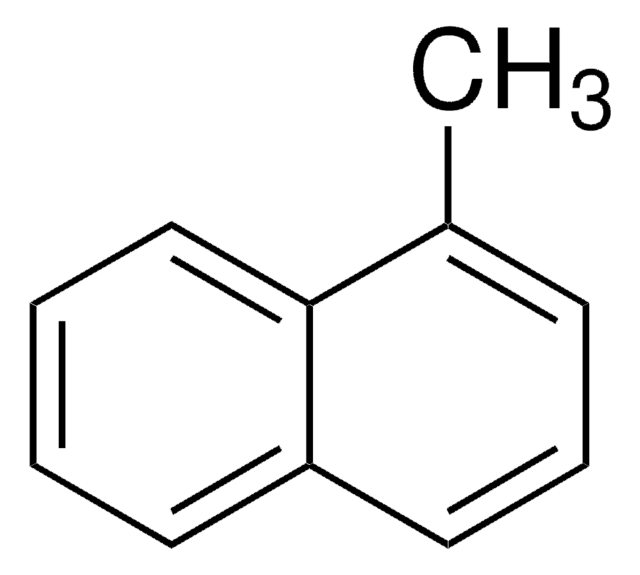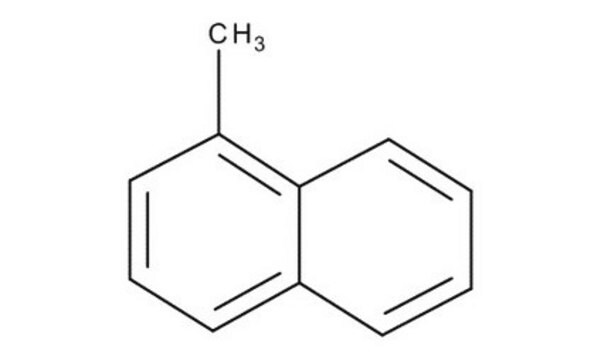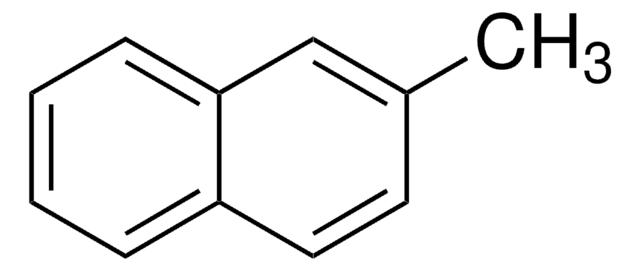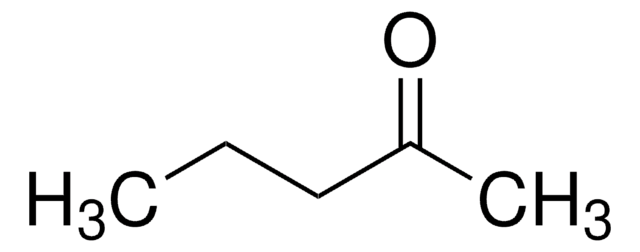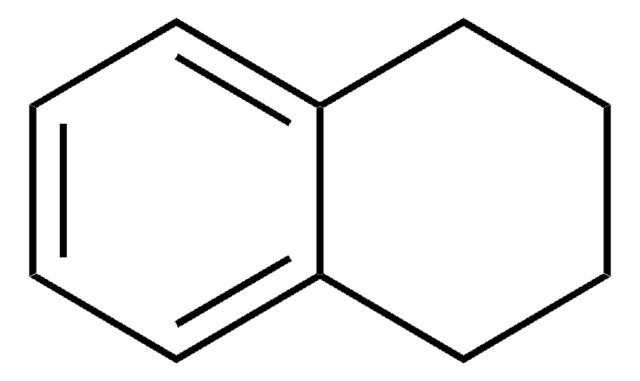Kluczowe dokumenty
W319309
1-Methylnaphthalene
≥95%
Synonim(y):
α-methylnaphthalene
About This Item
Polecane produkty
pochodzenie biologiczne
synthetic
klasa czystości
Fragrance grade
Halal
Kosher
agency
follows IFRA guidelines
zgodność regionalna
EU Regulation 1223/2009
Próba
≥95%
Formularz
liquid
temp. samozapłonu
984 °F
współczynnik refrakcji
n20/D 1.615 (lit.)
bp
240-243 °C (lit.)
mp
−22 °C (lit.)
gęstość
1.001 g/mL at 25 °C (lit.)
Zastosowanie
flavors and fragrances
Dokumentacja
see Safety & Documentation for available documents
alergen pokarmowy
no known allergens
alergen zapachowy
no known allergens
Organoleptyczne
earthy
ciąg SMILES
Cc1cccc2ccccc12
InChI
1S/C11H10/c1-9-5-4-7-10-6-2-3-8-11(9)10/h2-8H,1H3
Klucz InChI
QPUYECUOLPXSFR-UHFFFAOYSA-N
informacje o genach
human ... CYP1A2(1544)
Szukasz podobnych produktów? Odwiedź Przewodnik dotyczący porównywania produktów
Powiązane kategorie
Opis ogólny
Zastosowanie
- Viscosities and Densities of Binary and Ternary Mixtures of Aliphatic and Polyaromatic Hydrocarbons: Pyrene +1-Methylnaphthalene + Dodecane at T = (293.15 to 343.15) K. Experiment and Modeling.: This research presents experimental data and modeling of the viscosities and densities of mixtures involving 1-methylnaphthalene, providing valuable data for industrial applications and theoretical studies in chemical engineering (Tenorio et al., 2024).
- Chemical Composition and Optical Properties of Secondary Organic Aerosol from Photooxidation of Volatile Organic Compound Mixtures.: Investigates the secondary organic aerosols produced from photooxidation of volatile organic compounds including 1-methylnaphthalene, highlighting their optical properties and implications for air quality and climate modeling (Cui et al., 2024).
- Oxidation 1-methyl naphthalene based on the synergy of environmentally persistent free radicals (EPFRs) and PAHs in particulate matter (PM) surface.: This study explores the oxidative mechanisms of 1-methyl naphthalene on particulate matter surfaces, facilitated by environmentally persistent free radicals. The findings contribute to the understanding of air pollution chemistry and environmental degradation processes (Ghimire et al., 2023).
Oświadczenie o zrzeczeniu się odpowiedzialności
Hasło ostrzegawcze
Danger
Zwroty wskazujące rodzaj zagrożenia
Zwroty wskazujące środki ostrożności
Klasyfikacja zagrożeń
Acute Tox. 4 Oral - Aquatic Chronic 2 - Asp. Tox. 1
Kod klasy składowania
10 - Combustible liquids
Klasa zagrożenia wodnego (WGK)
WGK 2
Temperatura zapłonu (°F)
179.6 °F - closed cup
Temperatura zapłonu (°C)
82 °C - closed cup
Środki ochrony indywidualnej
Eyeshields, Faceshields, Gloves, type ABEK (EN14387) respirator filter
Wybierz jedną z najnowszych wersji:
Masz już ten produkt?
Dokumenty związane z niedawno zakupionymi produktami zostały zamieszczone w Bibliotece dokumentów.
Klienci oglądali również te produkty
Global Trade Item Number
| SKU | GTIN |
|---|---|
| W319309-100G | |
| W319309-1KG | |
| W319309-5KG-K | 4061838257727 |
| W319309-100G-K | 4061838093677 |
| W319309-1KG-K | 4061838257710 |
| W319309-5KG | |
| W319309-SAMPLE | |
| W319309-SAMPLE-K | 4061837528064 |
Nasz zespół naukowców ma doświadczenie we wszystkich obszarach badań, w tym w naukach przyrodniczych, materiałoznawstwie, syntezie chemicznej, chromatografii, analityce i wielu innych dziedzinach.
Skontaktuj się z zespołem ds. pomocy technicznej